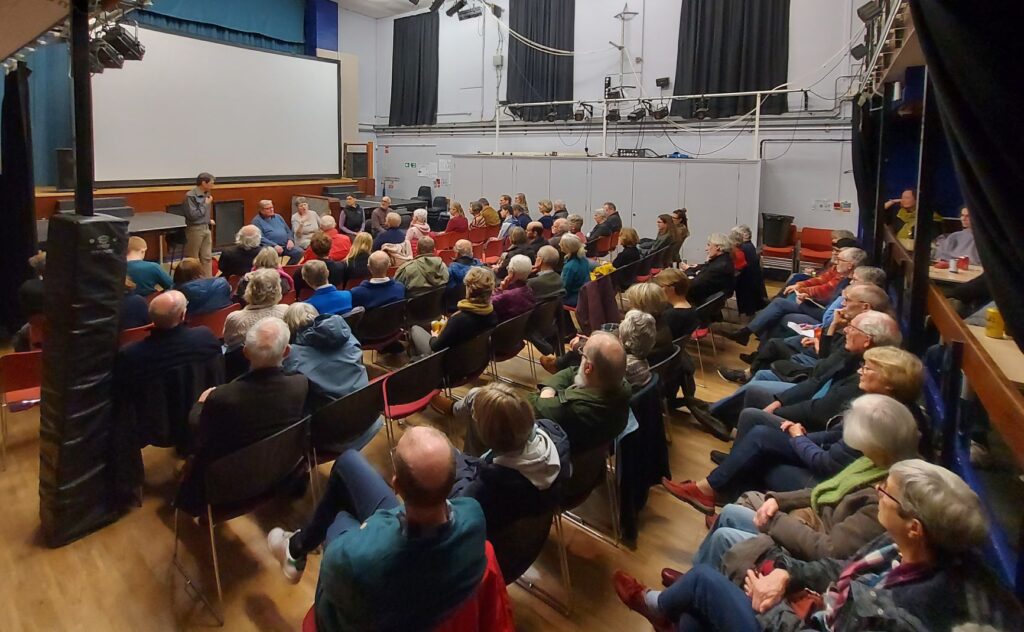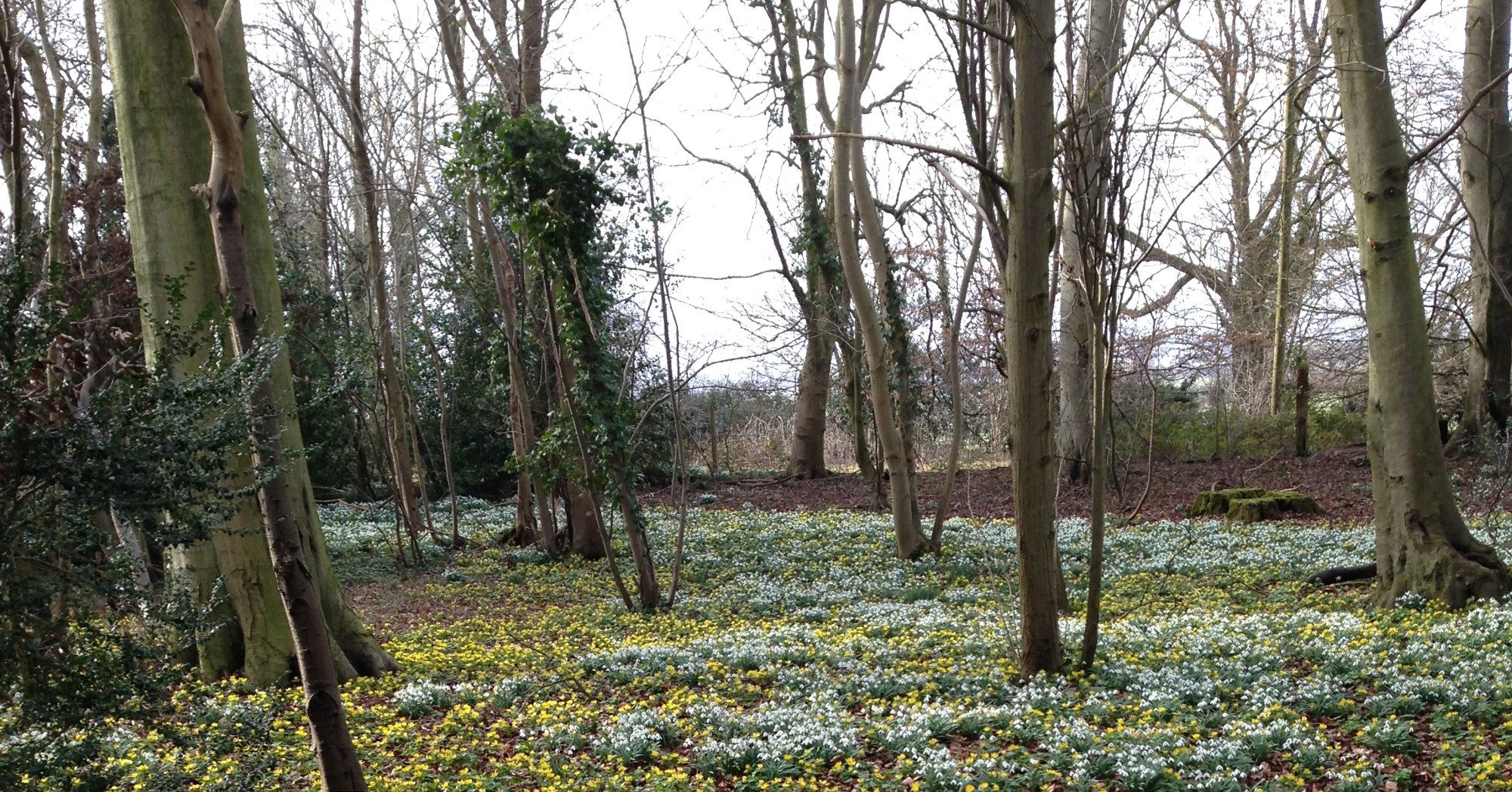On 1st February 2024, in co-operation with Sawston Cinema, we hosted a screening of Pure Clean Water, a film about the crisis in the natural chalk streams on our doorstep as a result of over-abstraction to supply the water we use in our homes and for local farming and businesses.

The event was sold out, with the venue capacity of 80 seats reached shortly before the day of the screening. We had tried hard to advertise the screening, but the film is it’s own best advertisement, as it was evident from a “straw poll” that most had been recommended to see the film by friends or colleagues who had already seen it.
Perhaps the most worrying point made in the film is that our local chalk streams now rely on artificial “augmentation” whereby the water company uses some of the water it has abstracted from the chalk aquifer to add to streams that would otherwise run dry (because of the abstraction), or to pump back into the chalk to maintain the flow from natural springs. During the dry summer of 2022, the water company chose to stop the augmentation, allowing streams to run dry anyway, rather than impose any restriction on domestic water usage.
Following the film itself, there was a chance for audience members to find our more about what they had just seen and explore the issues raised in the film. On hand were Tony Eva, the film’s director, Katie Thornburrow, a local councillor, Mike Foley, from Cam Valley Forum, and Monica Piyok, from Friends of the River Cam. (Katie and Monica had appeared in the film, interviewed by Tony).
One suggestion by Cam Valley Forum, mentioned in the film, is to adopt a principle of “Chalk Streams First”, so that decisions on planning, development, and water abstraction take into account the need to maintain a flow in these waterways. This principle does not seem to tally with current practice and is at odds with the prospect of significant new residential developments in the region which would require a corresponding increase in the amount of water abstracted.
It is possible that a new reservoir to be built near Chatteris could provide some mitigation by allowing more water to be abstracted during the winter when the water table is high, to fill the reservoir, which then provides a supplementary supply during the summer. However, this would not be in operation until the 2030’s at the earliest, and there is no guarantee that this would in any way protect the chalk streams rather that just meet the demands of an increased local population.
So it seems essential that our per-capita demand for water is reduced. This would need to include all uses including agricultural, but the aspect that each of us has some control over is our own domestic consumption. The average daily home usage is quoted in the film as 140 litres per person. Two of the panel members mentioned that they measured their own consumption as around 40 litres a day, and an audience member said theirs was about 70 (I have looked at my own home use and this is also around 70 litres a day).
We talked about the Eddington housing development which is designed to achieve a daily usage of 80 litres a person, by having a separate drain for surface water and grey water, so that it can be collectively retained, filtered, and re-used as a secondary water supply to each property for toilet flushing and to supply washing machines.
This approach may become more common in future, and regulations may require the plumbing in new buildings to be put in place to support this, but at present in most cases the two types of waste water leaving a property are re-combined into a single main drain, since thereis no onus on water companies to do any different. And retro-fitting grey-water storage and re-use in an existing property is likely to be impractical on grounds of cost and ensuring the stored water does not pose a health risk.
From the comments made by those who had a much lower than average consumption, this had been achieved simply by being aware of the value of our drinking water supply, and changing habits to avoid waste rather than comprimising on cleanliness, hygiene or the enjoyment of a hot shower. However, watering the garden should be from a water butt, not from tapwater. There was a consensus that its OK to let a garden lawn go brown in a dry summer – it will grow back green remarkably quickly when the rain returns – but there may be no practical alternative to tap water in dry spells if growing plants for food in a garden or allotment.
Of course those without a water meter have no way of knowing what their usage is, but customers can request to have a water meter fitted, and in the majority of cases this will lead to lower bills through lower usage – having to pay per litre is a good driver to adopt the good habits that avoid water waste.
Beyond valuing our own home water supply and taking steps to reduce personal consumption, what we can do as individuals is to add our voice and to groups that are campaigning to protect the chalk stream habitats, and respond to public consultations such as on the forthcoming Local Nature Recovery Strategy which will be drafted and developed over the coming year.

